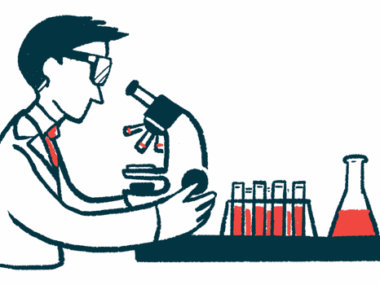Limited hand function disrupts daily life for people living with SSc
Study highlights physical, emotional, and social toll of hand impairment
Written by |

Limited hand function makes everyday tasks, work, and hobbies difficult for adults with systemic sclerosis (SSc), according to an interview-based study. The loss of hand mobility and strength also affects emotional health and social life.
Patients said tasks requiring fine motor skills — such as typing or writing — are especially challenging.
“Addressing this unmet need requires greater clinical awareness and more personalised and symptom-specific management strategies,” the researchers wrote.
The study, “Impact of hand function impairment on daily life of patients with systemic sclerosis: a qualitative study,” was published in Rheumatology.
Hand symptoms are frequent and can interfere with daily living
Hand problems are common in people with SSc, or scleroderma — an autoimmune disease marked by the buildup of scar tissue in the skin and internal organs.
These hand issues can significantly affect daily activities, work, and quality of life. The condition includes Raynaud’s phenomenon, characterized by reduced blood flow to the fingers.
While the impact of hand problems in SSc is recognized, there remains limited understanding of patients’ perspectives on hand function impairment and their specific care needs.
To better understand this, researchers in the U.K. and the Netherlands conducted interviews with 33 adults who had a moderate to high degree of hand impairment caused by SSc. Most participants were women (76%), and more than half (55%) had diffuse cutaneous SSc.
From the interviews, the team identified three main themes associated with SSc hand function: symptoms, impact, and met/unmet needs.
Participants described a range of symptoms — from Raynaud’s (pain, tingling, and numbness) and slow-healing ulcers to puffy, stiff hands with limited motion, skin thickening, and contractures. Amputations resulted in a loss of strength and function. Participants also reported experiencing pain and a loss of sensation in their fingertips, especially in cold weather.
“I constantly drop things because I don’t really feel like I’m holding onto anything,” a 29-year-old woman said. “I also can’t grip properly as my grip strength is completely gone, and it all feels a bit numb.”
Hand impairment affected many aspects of daily life, from doing household chores and cooking to dressing, typing, and driving. Reduced dexterity, strength, and sensation made even small tasks — like handling small objects — difficult. Cold weather and overuse worsened symptoms, and pain, fatigue, and loss of grip strength further limited independence.
“It’s hard because you think you can do something, but when you try, you can’t, and you need help,” a 52-year-old woman said. “To be honest, it’s demoralizing. You feel useless.”
Work, hobbies, and social participation all affected
Hand impairment severely limited work and hobbies, often requiring modifications or even forcing people to stop. Fine motor tasks such as typing and writing were significant barriers, usually leading to job changes or job loss. While workplace doctors were supportive, many participants stopped working. Hobbies including sports, gardening, sewing, and music were also greatly affected or abandoned.
Reduced hand function took a psychological toll, often causing frustration, sadness, and difficulty accepting limitations. Even after learning to adapt, many said pain, dependence, and others’ lack of understanding were distressing. Some reported embarrassment over their hands’ appearance, and many expressed fears of future decline. Loss of hand function also led to increased social isolation and reduced participation in activities. Gestures like handshakes were sometimes avoided due to pain.
Patients reported valuing information from healthcare providers, patient associations, social media, and online sources, but preferred face-to-face help. Many said primary providers in tertiary care centers lacked knowledge about SSc and hand problems, leading to delays and feelings of being unheard. Hand therapy proved more effective than physiotherapy, and patients suggested individualized monitoring and regular hand assessments would improve care.
“It would help to understand how the hands are affected and what to expect,” said a 63-year-old woman. “What I’ve been given feels like a generic solution, but it’s not tailored to my condition. Knowing what I can do to help myself would make a big difference.”
Having support from others in the same position really helps. They understand the disease, so we can talk about things I wouldn’t even share with my family.
Participants managed symptoms through peer support, exercises, tools, and medication. Peer groups provided tips and comfort, though some found it upsetting to hear stories from others. Home exercises helped maintain function but rarely provided long-term improvement. Heated gloves, modified utensils, braces, and splints aided daily tasks. Medications, painkillers, and creams were used, but their effects were difficult to assess because people were receiving multiple treatments at the same time.
“Having support from others in the same position really helps,” a 52-year-old woman reported. “They understand the disease, so we can talk about things I wouldn’t even share with my family.”
“There is a substantial clinical need to better understand the underlying mechanisms and best approach to treat hand function impairment,” the researchers concluded. “A personalised approach with regular monitoring is preferred to address this unmet need.”
“A limitation of this study is that almost all participants are Caucasian,” the team added, “which reflects our study population but not the global SSc population.”






